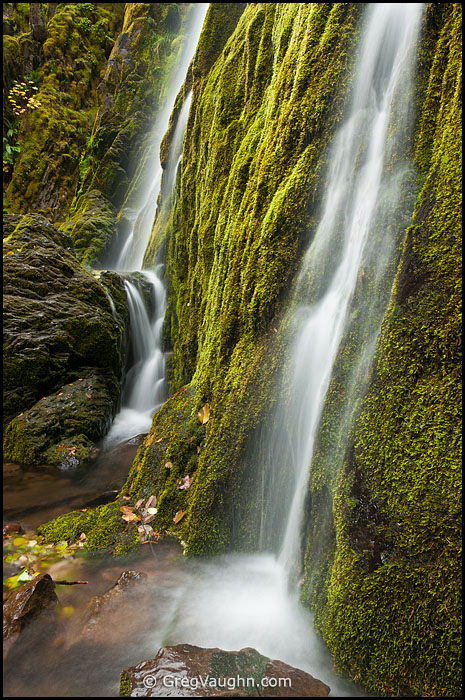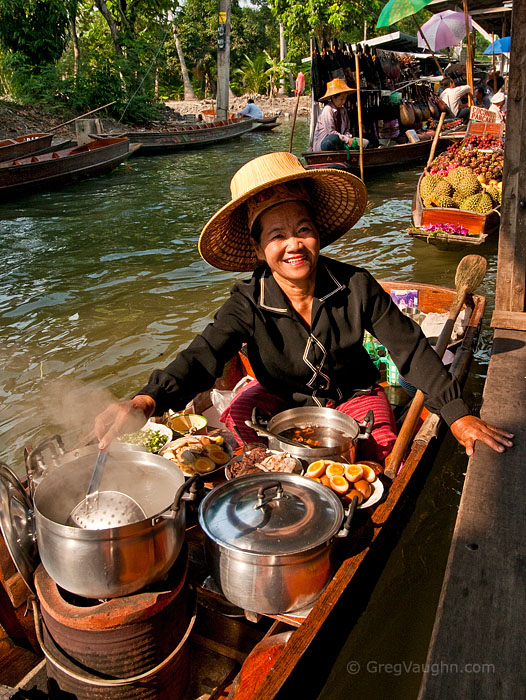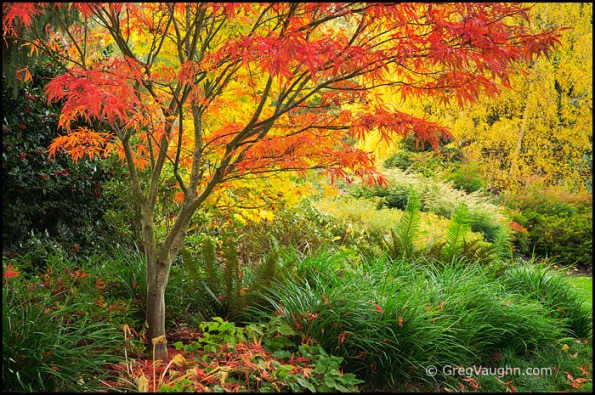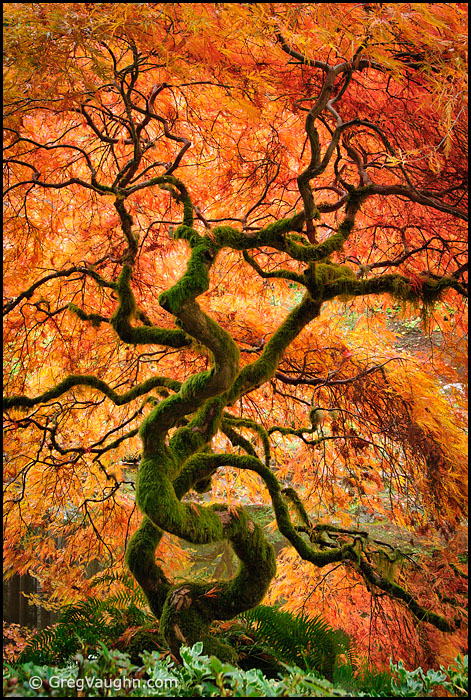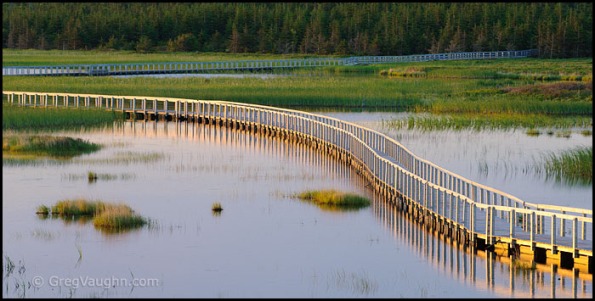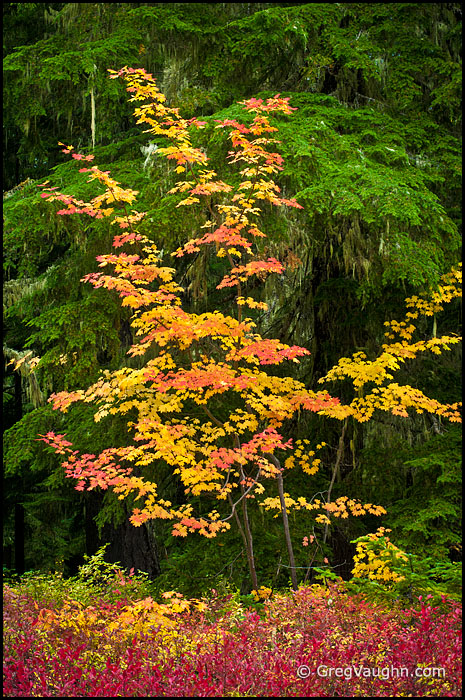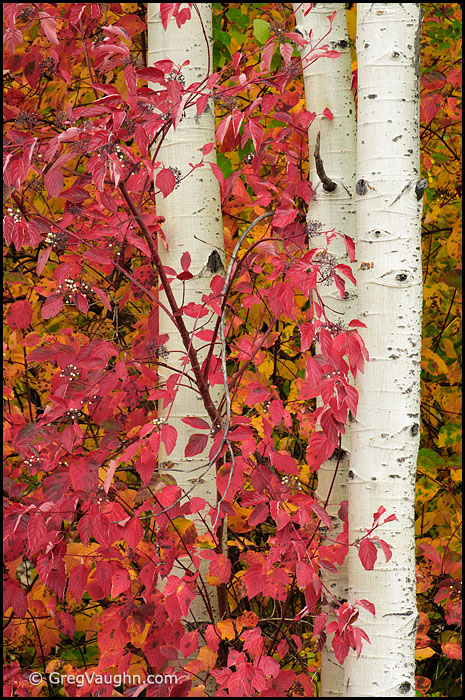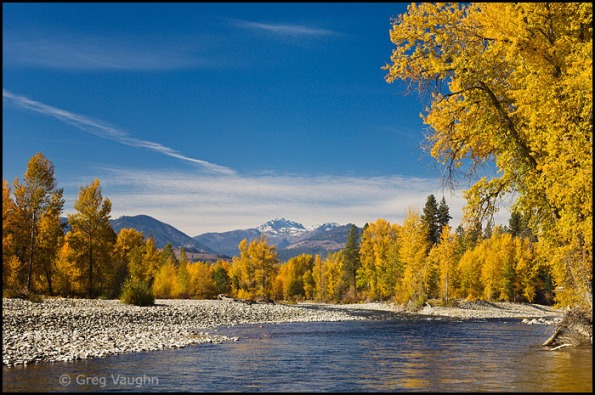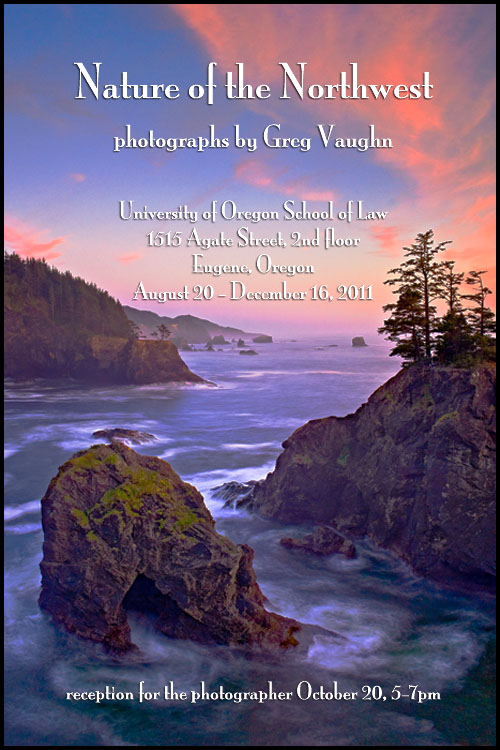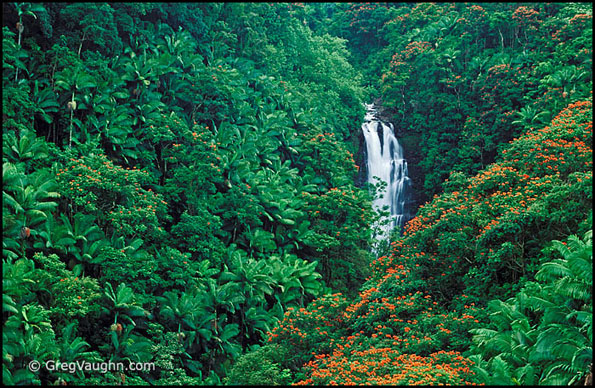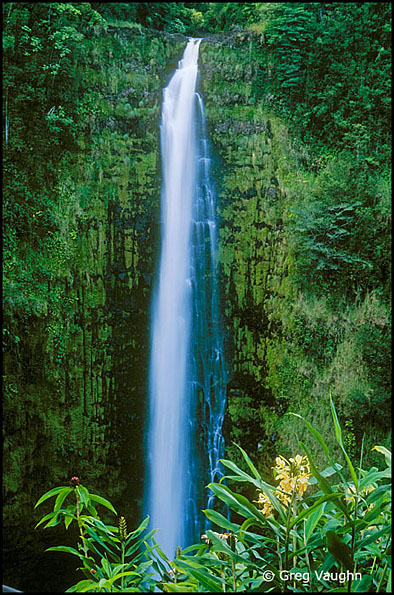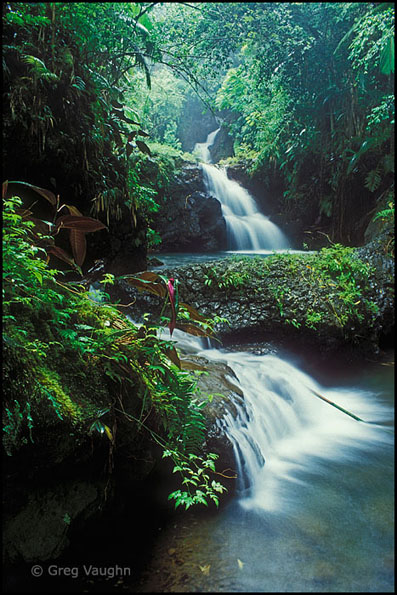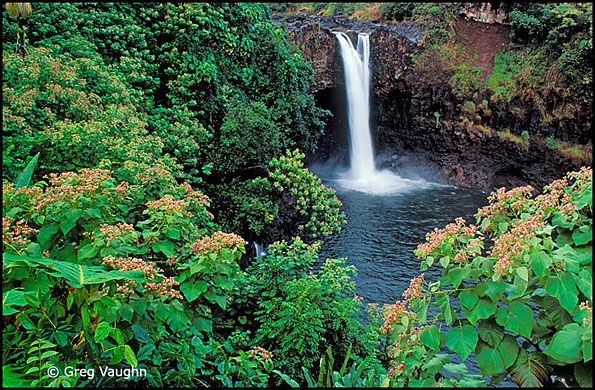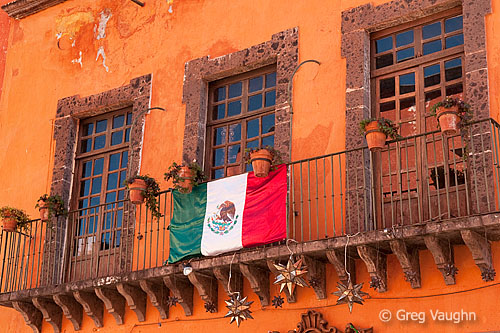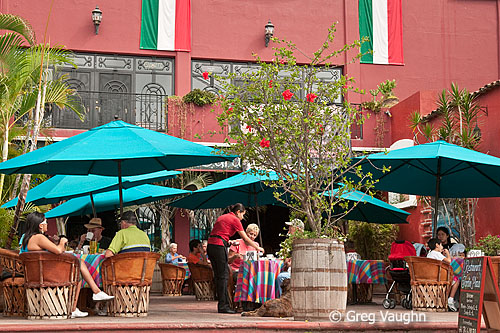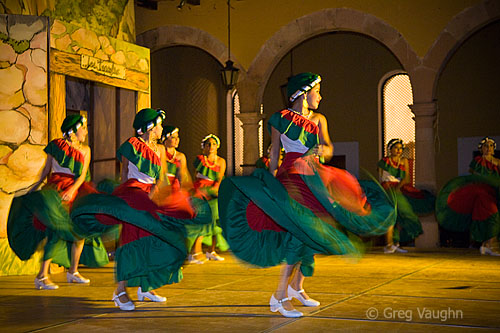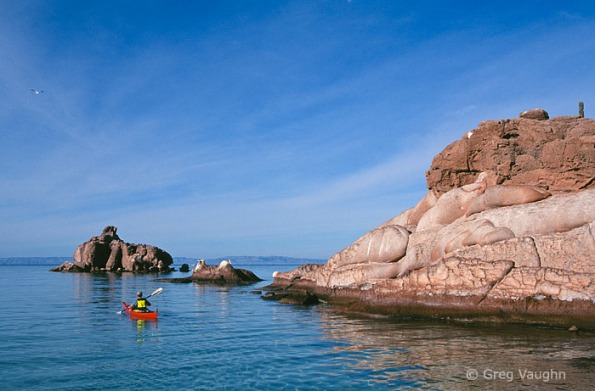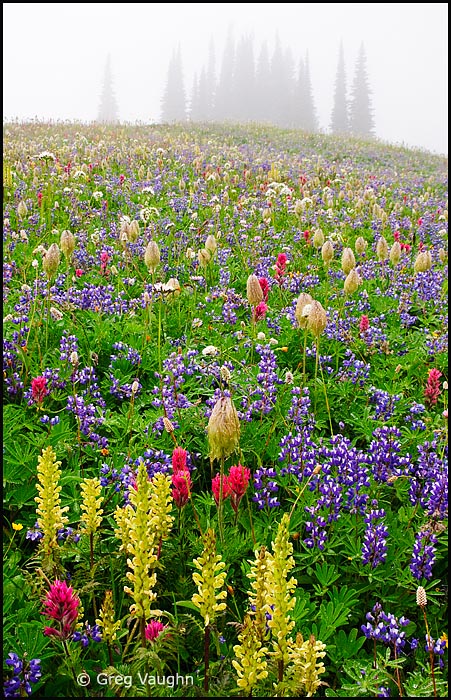Newer posts on Wanders & Wonders can be found at www.GregVaughn.com/blog . See you there!
A very scenic drive on Forest Service roads in the Umpqua National Forest will take you to a trio of waterfalls between Cottage Grove and Oakridge, Oregon. I found conditions for photography just about perfect the other day for waterfall photography, with soft light overcast light and good water flow in the creeks thanks to recent rains. To add to the attraction, there is still a bit of fall color left in the lower elevation areas on the west side of the Cascade Mountains.
Driving east from Cottage Grove, I skirted Dorena Lake and continued on Laying Creek Road, which becomes Forest Road 17, and headed up into the mountains. First stop was Spirit Falls, pictured above. Alex Creek fans out over moss-covered basalt to form a beautiful veil, dropping 60 feet into a small, shallow pool surrounded by lush forest.
Just a few miles away, I found Pinard Falls, where the East Fork of Laying Creek drops 105 feet in a narrow gorge. The view right from the trail is pretty nice, and I tried using some bigleaf maple tree leaves to help frame the scene and add some color. This is one of those falls where if you get right down to the pool and look up, your photo will include a lot of white sky.
The third waterfall on this drive is Moon Falls, a few miles upstream from Spirit Falls on Alex Creek. The falls are a lacy 125-foot cascade that is quite beautiful, but difficult to get a good photo angle on due to the terrain. Rather than a full view, I opted to scramble up a talus slope to an upper pool area with a side view of a portion of the falls.
Each of these falls is reached by an easy 1-mile roundtrip hike. The surrounding forest is a mix of second growth and old growth, with ferns and mushrooms in the understory. Fall and late spring are the best times to photograph them; in summer the creek flow is very low and in early spring the falls are thundering torrents from the mountain snow melt. If you just want a pleasant hike, however, the trails are accessible year round. Visiting these falls makes a really nice day trip, and you can make it a loop trip by continuing on good gravel-surfaced forest roads to Oakridge and then west on Highway 58 to return to I-5.
Here’s a Google Map with Spirit Falls pinpointed to give you a general idea of the location: http://g.co/maps/7ha86
The Umpqua National Forest and BLM teamed up for a website that has information and driving directions for a whole bunch of waterfalls in the area that lies east of I-5 between Eugene and Roseburg.
A really great resource for more information on these falls, and waterfalls all over the Pacific Northwest, is www.waterfallsnorthwest.com .
Tech stuff for the above images: Nikon D300s, Nikon 12-24mm f/4 and 17-55mm f/2.8 lenses, ISO 100 and polarizer plus ND filter so I could get down to shutter speeds of 1-5 seconds and give the water that nice, silky look. On a tripod, of course (Gitzo legs & Really Right Stuff BH-40 head).
There are hundreds of beautiful waterfalls in western Oregon – where are your favorites?
Since 1981, the Society of American Travel Writers has honored the finest travel photography with the annual Bill Muster Photo Competition, named for long time SATW member and accomplished travel journalist Bill Muster. In the past, I have won individual awards in categories such as Best Action Photo and Best Natural Scenic. This year I am pleased to announce that I won the Silver Award for Single Subject Portfolio with a selection of my Thailand images. Click on the link for a slideshow of the winning portfolio of photos from Bangkok and Chiang Mai.
The Seattle, Washington area is home to several beautiful Japanese Gardens, and right now they are at their very best. The fall color is at peak and the maple trees are brilliant shades of red, orange and yellow.
Best known of the Seattle area gardens is the Japanese Garden at Washington Park Arboretum. This garden, part of the University of Washington Botanic Gardens, is a photographer’s delight most any time of year, but especially in fall. The ornamental maple trees here are outstanding and the design of the gardens provides plenty of possibilities for landscape compositions. Unfortunately, tripods are prohibited in this garden except during special photo sessions. These sessions are held Tuesdays and Saturdays in October before the garden opens and cost $30. There is a limit of 10 Photographers in each session; advance registration is required and the sessions usually sell out. This no-tripod policy is unfortunate, but likely is a result of repeated instances of photographers being inconsiderate of other garden visitors. Monopods, however, are allowed at anytime. And fortunately, with the advances in camera vibration reduction technology and the ability to obtain excellent images at high ISOs, the inability to use a tripod is not the issue that it was when shooting slow speed film was the only way to achieve top quality photos.
Kubota Garden in south Seattle may not be as well known, but the grounds here are also very photogenic. Kubota is a public park owned by the city of Seattle. There are no restrictions on tripods here (hooray!). It is a popular site for weddings and portrait sessions, but a permit is required for professional photographers using the garden for these purposes.
Over on the east side of Seattle, the Yao Garden in Bellevue Botanical Garden was constructed as part of a sister city program between Bellevue and Yao, Japan. Like the other Japanese Gardens, it has some nice fall color maples, but is also especially beautiful in spring when the rhododendrons and azaleas bloom. Tripods are okay here, too, and as at Kubota permits are needed for commercial photography (including weddings and portrait shoots).
A short ferry ride from Seattle to Bainbridge Island in Puget Sound will get you to Bloedel Reserve, the former estate and private gardens of lumber company heir Prentice Bloedel. The gardens are now open to the public, and the Japanese Garden section is considered one of the top ten Japanese gardens in the USA. If you’re a photographer, get there when the garden opens in the morning because you’ll likely feel like you’ve run out of time but not photo possibilities when the garden closes at 4pm. Fiery red and orange laceleaf maples are here of course, but also a lovely tea house and traditional stone and sand dry garden. Portrait photography sessions are not allowed, but landscape and nature photographers are welcome to use their tripods at Bloedel (please do so considerately!).
This year (2011), the peak of fall color in the Japanese gardens in the Pacific Northwest looks to be the first 10 days or so of November. This has been an unusual year weather-wise, however, and in a more typical year the best color is around mid-October. In spring, early to mid-May is prime time for the rhododendron and azalea bloom in these gardens.
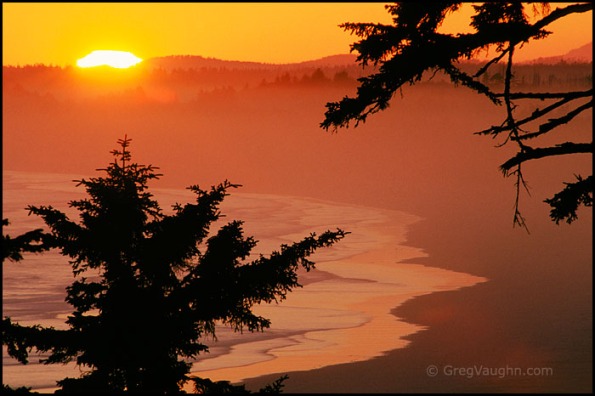
Sunset over Wickaninnish Bay from Green Point in Pacific Rim National Park; Vancouver Island, British Columbia, Canada.
The U.S. can proudly claim the world’s first National Park with the establishment of Yellowstone National Park in 1872, but Canada was the first country to institute a nationwide parks service, and 2011 marks the centennial of Parks Canada.
Today, Parks Canada manages 42 National Parks, plus a bunch of National Landmarks, Historic Places and Conservation Areas. Those of us in western North America are most familiar with Banff, Waterton Lakes and Jasper National Parks, all of which are outstanding destinations for landscape, nature and wildlife photography.
Lesser known parks span the vast country, including, on opposite edges of the continent, Pacific Rim National Park on the west coast of Vancouver Island and Prince Edward Island National Park in the eastern Maritime Provinces.
The National Geographic Society publishes the excellent Guide to the National Parks of Canada, official guidebook for the 100th anniversary of Parks Canada. It’s a great overview to the whole park system, with, naturally, outstanding photography.
Canadian nature photographer Darwin Wiggett has published several books that are great resources for landscape and scenic photographers. His How to Photograph the Canadian Rockies ebooks are even better than his classic out of print book with the same name.
For more information about Canada’s centennial celebration, check out the Parks Canada website.
Interested in where to find the best autumn foliage for landscape and scenic photography in Washington State? I did a quick circuit around the Cascades last week and found quite a range of fall color. In most locations, the color was just starting to get good, so this week and the next should be optimal for making photographs, or just viewing for the pleasure of it.
In the southern Cascades, around Trout Lake and Mount Adams, there were places with great color, and some where the color was just starting. I found a few areas around Indian Heaven Wilderness with brilliantly color vine maple and huckleberry. By now trees around Trout Lake and Conboy Lake National Wildlife Refuge should be good.
The color was very good on the east side of Stevens Pass in the Washington Cascades, and likely will just get better in the next week or two. Vine maple are vibrant red and yellow, with aspen and cottonwood coming on strong. The area around Tumwater Canyon and the road to Lake Wenatchee is very good. On the west side of the pass, color was muted, and most of the bigleaf maple were a mottled brown and yellow. Let’s hope it gets better on the western side of the passes.
On Mountain Loop Highway and Sauk River Valley between Granite Falls and Rockport, the color was just so-so last week, but what a beautiful drive. If the bigleaf and vine maple brighten up a bit, this is a great option for fall color forest photos.
In the North Cascades, the alpine larch were great at higher elevations (~3,000-5,000’) but not much elsewhere. The amount of snow covering the trail at Maple Pass – Heather Pass Loop caught me by surprise, but what an incredibly scenic hike! Shorter, easier trails at Blue Lake and Cutthroat Lake lead to beautiful little lakes surrounded by snow-capped peaks and hillsides dotted with bright yellow larch.
At Snoqualmie Pass, there was very little color along I-90, but good color was visible on the mountainsides above. Traffic however, was miserable going eastbound due to construction projects; maybe it’s better on the weekend, but check WSDOT reports.
The huckleberry should be getting very good at several places in Mount Rainier National Park, but if you’re planning on traveling to The Mountain, be aware that Stevens Canyon Road between Paradise and the Ohanapecosh entrance is closed this fall.
In general, it seemed like the bigleaf maple on the west side of the Cascades was more or less a mottled brown & yellow, while at the higher elevations and on the east side, the color may be very good in the coming week or two – delayed beyond the usual timing just like the wildflower bloom was earlier this summer.
Fall color should be very good in the eastern part of the state in the next week or two. Methow Valley was looking good, with lots of aspen and cottonwood about to light up the landscape with their sunshiny yellow foliage.
I didn’t make it out to the Kettle Range and Selkirk Mountains in the far northeast Washington, or to the rainforests at Quinault and Hoh in Olympic National Park, but I’ll bet those places are looking pretty good right now, too.
Click on the link for more of my photos of fall color in Washington.
Where are your favorite places for fall color photography in Washington? I hope to get out again soon, and would love to hear what everyone else has found recently.
A selection of thirty of my scenic landscape and nature photos is currently on display in the upstairs gallery at the University of Oregon School of Law. The photographs were taken over a period of years during my many wanderings and journeys in the Pacific Northwest, and highlight some of the best locations for nature photography in Oregon and Washington.
Each of the 18×24″ prints in the show were custom printed using archival inks, paper and framing materials (for the photo tech types: Epson Ultrachrome inks and Ilford Galerie Gold Fibre Silk paper).
If you live in or are visiting Eugene, please drop by to see the show, which runs through December 16, 2011. And if you’re in town on October 20, please come and say hello at the artist’s reception on October 20 from 5-7pm.
The show is in the second floor gallery at the University of Oregon’s William Knight Law Center, 1515 Agate Street, Eugene, Oregon – opposite fabled Hayward Field.
The Big Island of Hawaii was my home for a number of years and is still one of my favorite destinations. Largest of all the Hawaiian Islands, it contains a full range of environments from arid desert to tropical rainforest. Plentiful rainfall on the Hamakua Coast and in the Hilo area – the northeast side of the island – makes for lush forest and a number of waterfalls that are great subjects for nature photography.
Best of known of the Big Island’s waterfalls is Akaka Falls. A short walk in Akaka Falls State Park on the Hamakua Coast leads to a great view where Kolekole Stream plunges 442 feet to a deep bowl. A few feet further on the trail you can get a look at cascading Kahuna Falls. A couple of small trickling waterfalls and a bamboo forest are also good photo subjects at Akaka Falls State Park.
Further north on the Hamakua Coast, near the community of Hakalau, Umauma Stream pours over lava cliffs to form a triple waterfall. Best view of these falls is from World Botanical Gardens, which is also a great place to photograph tropical plants and flowers like bromeliads, orchids and ginger.
Hawaii Tropical Botanical Gardens, just north of Hilo, is the location for Onomea Falls, and another great place for photography with an extensive collection of exotic flora.
Vying with Akaka Falls as the most popular and most visited of the Big Island’s waterfalls is Rainbow Falls, just a short distance from downtown Hilo. Best time to try and catch the rainbow formed when the sun hits the spray of the waterfall is between 9-10 am. I recommend that photographers get there a little earlier, because right about that time busloads of tour groups arrive so it can be difficult to get in position for just the right angle on the falls.
If you’d like to see more photographs of Hawaii Island, please see my Big Island photo gallery.
16 de Septiembre is commemorated throughout Mexico with perhaps even greater fervor than the 4th of July in the USA. On this day in 1810, Father Miguel Hidalgo, the priest of a small town parish, declared Mexico’s independence from Spanish rule.
This event generates huge celebrations throughout Mexico, perhaps even more so this year in that Mexicans are celebrating the bicentennial of their independence. Somewhat surprisingly, there has been almost no mention of this in the general American media. Perhaps this is because the same mass media have been busy promoting the sensationalism of the brutal killings by the drug cartels. No question that there has been an incredible amount of violence in parts of Mexico over the past few years, but while the problems are for the most part confined to the northern part of the country near the US border, and in a few isolated areas of the country, most of the American public now thinks that it is unsafe to travel anywhere in Mexico.
That is really a shame, because Mexico is a wonderful place to visit, and it is entirely safe to do so in most of the country. As far as I know, there have been no reported problems of drug cartel violence in southern Baja, the Pacific coast region around Puerto Vallarta, the Yucatan Peninsula with its fabulous Mayan ruins, or such popular US and Canadian retiree enclaves as San Miguel de Allende and Guanajuato. The latter, incidentally, very close to the little town of Dolores Hidalgo, birthplace of Mexican independence.
A certain young lady and I spent the summer of 1972 traveling around Mexico. As we were preparing for the trip, well-meaning friends warned us of the dangers, of banditos, and told us to be sure and take a gun, or at least a fierce dog. We logged 10,000 miles in an old Ford van, traveling from Nogales down the west coast, crossing the country through Guadalajara and Mexico City to the Gulf, drove south as far as there were roads at that time in Yucatan, crossed back to the Pacific side through San Cristobal de las Casas, and headed north through Oaxaca and then the center of the country to the US border. We camped, we stayed in cheap hotels, we ate in the mercados and from carts on the plazas. Not once during that entire trip did we have any problem with the people of Mexico.
That young lady and I got married after returning from that trip, we did another extensive road trip in Mexico two years later, and we celebrated our 25th anniversary with a visit to La Paz and Los Cabos in Baja California Sur. Subsequent trips have only reinforced our fondness for Mexico, and we’re very much looking forward to our next visit.
Here’s a link for more of my photos of Mexico, viewable as a slide show or gallery. Thanks for looking!
In a year with more typical weather, the meadows in the Paradise area of Mount Rainier National Park would look something like this photo around the first week of August, and the place would be swarming with photographers. This year, while much of the country suffers under sweltering heat, summer has barely arrived in the Pacific Northwest. The La Niña weather pattern brought us a long, cool and wet winter and spring, and lots of snow in the mountains. As a result, the wildflowers are much delayed this year in the Cascades, and some people are even wondering if there will be a bloom this summer.
For many nature photographers, myself included, a visit to Mount Rainier is practically an annual rite of summer. Knowing that the season is a bit skewed, I made some calls and sent some emails to check on conditions on The Mountain. For all you wildflower enthusiasts, here’s what I found:
As of August 9th, a ranger at the Jackson Visitor Center reports that there is some nice flowering along the roadsides in the park, but the Paradise meadows are still under several feet of snow. They are hoping that it will melt out by the end of the month.
Northwest photographer David Cobb, who specializes in wildflowers, visited Rainier the last week of July and found some flowers along Bench Lake Trail (near Reflection Lakes), but says that Paradise was under 4-6 feet of snow at that time. David predicts that the peak of the flowering this year will be the last week in August or the first of September, and that growth will be stunted in comparison to a normal year.
Alan Bauer, a Washington-based photographer for several trail guides for Mountaineers Books, drove through the park on August 5 and found 2-4′ of snow covering much of the ground at Reflection Lakes. Alan says the Sunrise area is probably starting to melt out and the lilies will soon start to pop up, but thinks Paradise won’t happen until the end of August.
Photographer Don Geyer, whose excellent guide to Mount Rainier is written with photographers in mind, did some recent hikes in the park and found good lupine at lower elevations, as well as some nice flowering in Box Canyon and Stevens Canyon. Like the others, Don reports lots of snow around Reflection Lakes, Mazama Ridge and Paradise.
One more expert opinion, from Ron Warfield, retired Assistant Chief Naturalist at Mount Rainier National Park. Ron expects the flowers to peak at the very end of August, about three weeks later than in a normal year. He also says that there will probably not be the wonderful carpets of color anywhere, but there could be some areas of concentrated blooms. On a historical note, Ron points out that this is the third latest melt out since 1972 – a year when there was no summer bloom season at all – and that the flowering could be delayed until early September, as happened in 1999. Ron is also the author of Mount Rainier, a Sierra Press book full of beautiful photos and a wealth of information on the history, geology, ecology and wildlife of Mount Rainier National Park.
Have you been to Mount Rainier yourself lately, or heard from others who have been? If you have any more recent information, please post it here.



